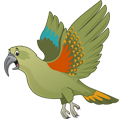
Dogs are capable of understanding up to 250 words and gestures and can count up to five.

Dogs have formed such a strong bond as pets, workers and friends (companions) to humans that they have earned the nickname "man's best friend".

Dogs have a remarkable sense of smell. They are capable of smelling and identifying odours in concentrations nearly 100 million times lower than humans can.

Dog experts usually refer to males as ‘dogs’, females as ‘bitches’, dogs younger than a year old as ‘puppies’ and a group of offspring as a ‘litter’.

Dogs have superior hearing over humans, capable of hearing sounds at four times the distance.

Dogs don’t enjoy being hugged as much as humans and other primates. Canines interpret putting a limb over another animal as a sign of dominance.

Hyenas aren’t actually dogs. They are more closely related to cats.

Spiked dog collars were invented in ancient Greece and were originally designed to protect dogs’ throats from wolf attacks.

It is a myth that dogs are colour blind. They can actually see in colour, just not as vividly as humans. On the other hand, they have better night vision than humans.

A dogs’ only sweat glands are between their paw pads.

Dog’s nose prints are as unique as a human’s finger prints and can be used to accurately identify them.

An African wolf dog known as the basenji is the only dog in the world that cannot bark.

After birth, puppies’ eyes do not fully open until they’re about 12 days old.

Dogs dream just like you! Dogs have the same brain wave patterns while they are asleep as humans, so they dream just like we do.

Smiling a toothy smile at a dog may make them feisty! Dogs see a toothy smile not as friendly body language, but detect your "bearing teeth" as a sign of aggression.

The seeds of apples and pears should be kept away from dogs. Their composition includes arsenic which could kill your dog.

Feeling a bit anxious? Studies indicate that petting your dog can lower your blood pressure.

Dogs can fall in love! A professor at Claremont Graduate University in California found that a dog’s brain releases oxytocin - the love hormone - when it interacts with humans and dogs, just the same as a human brain does when we hug or kiss.

The oldest in-tact fossilized remains of a pet canine dates back 33,000 years. It was discovered in Siberia in the 1970's.





















 Nutrition
Learn more
Nutrition
Learn more
 Environment
Learn more
Environment
Learn more
 Health
Learn more
Health
Learn more
 Behaviour
Learn more
Behaviour
Learn more
 Mental Wellbeing
Learn more
Mental Wellbeing
Learn more


.jpg)


